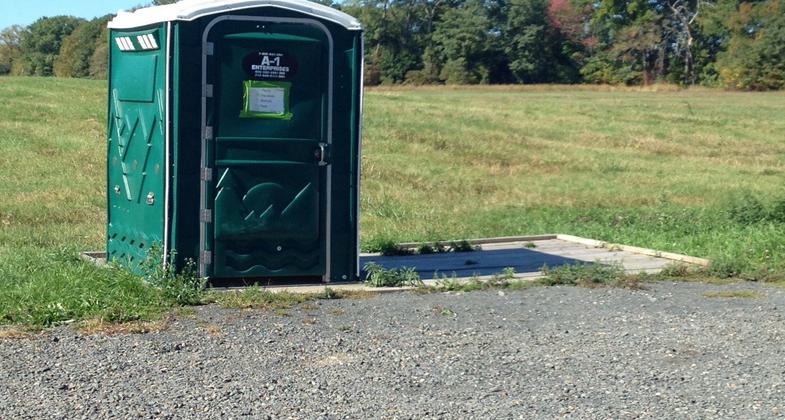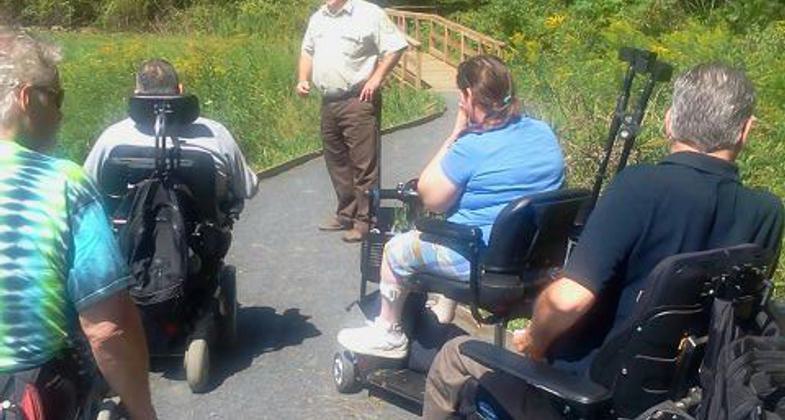Fort River Birding and Nature Trail
check with the trail manager for updated details before visiting.
Fort River Birding and Nature Trail
U.S. Fish and Wildlife Service
Backcountry Trail
- Length
1.1 miles
- Elevation Gain
--
- Route Type
Loop
(1 review)
- Length
1.1 miles - Elevation Gain
-- - Route Type
Loop
The Fort River Birding and Nature Trail is a universally accessible trail that provides equal access and equal opportunities for all people to spend quality time outdoors and enjoy the natural world. The trail functions as an outdoor visitor center, connecting people to nature by immersing them in diverse habitats from grasslands, riparian areas, and upland forests. The trail is located in the midst of a lively Five College Consortium and is used as an educational and experiential learning platform for students at all levels of learning. At the same time, the trail is frequented by senior citizens and those with mobility challenges, who enjoy the tranquility of the outdoors.
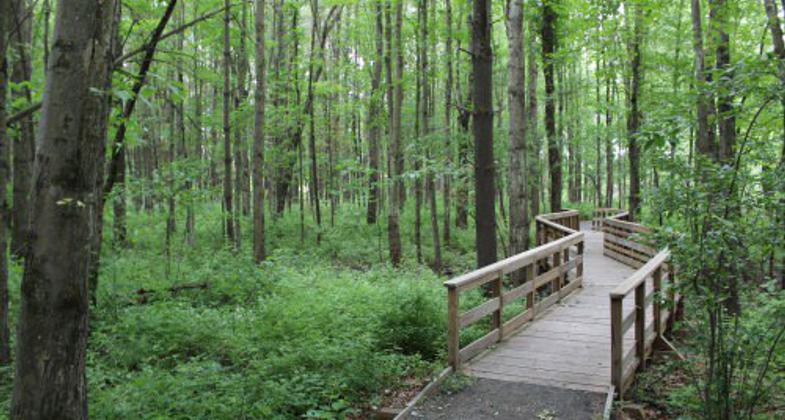
Forested section of the trail. Photo by USFWS/Susan Wojtowicz

Beautiful walk on a snowy day. Photo by Janie Walker.

Visitors will enjoy a variety of habitats as they walk through the trail, including this successional habitat.

A section of the trail leading through the woods.

The elevated boardwalk helps to keep the ecological integrity of the wildlife and habitat that surrounds the trail.
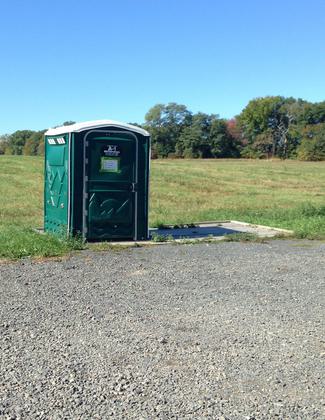
An accessible restroom is provided at the trail head.
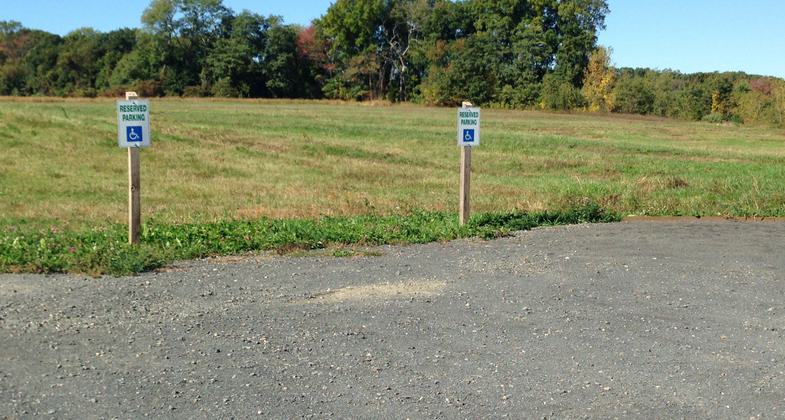
Accessible parking spaces are provided at the head of the Fort River Trail.
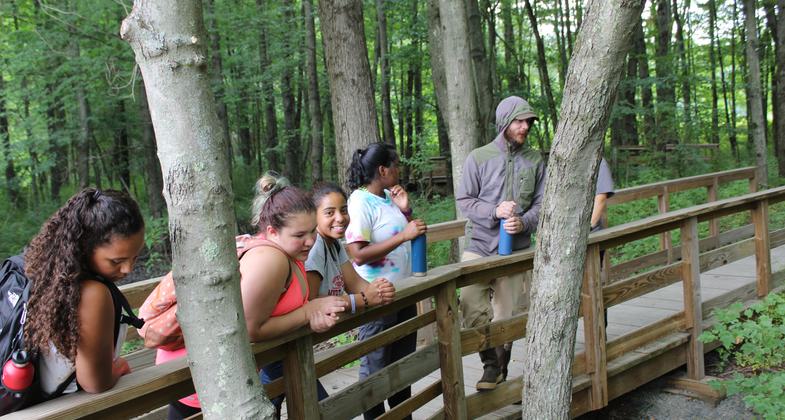
A group of high school students are visiting the trail as part of the Urban Refuge Partnership in Springfield, Mass

A group of students explore the world of macro-invertebrates while on a field trip to the Fort River Trail.
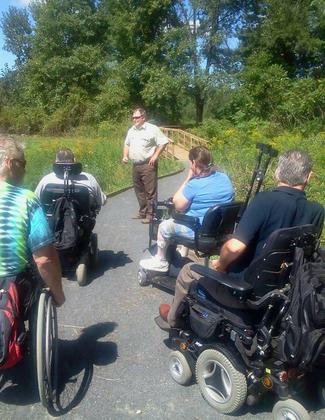
Refuge manager Andrew French gives a tour of the Fort River Birding and Nature Trail.
Location: The trail is located in Hadley, Massachusetts, at the Fort River Division of the Silvio O Conte National Fish and Wildlife Refuge.
- States: Massachusetts
- Counties: Hampshire
- Cities/Townships: Hadley
Background and vision
The Fort River Birding and Nature Trail is a multi-functioning, universally accessible trail that provides quality access to all, meeting Architectural Barriers Act (ABA) Accessibility standards and supporting the intent of the National Wildlife Refuge System Improvement Act of 1997, and the Silvio O. Conte NFWR Act of 1991. Located in Western Massachusetts, the trail is intended to be used as an"outdoor visitor center" and an outdoor classroom for both guided and self-guided educational experiences.
Construction through teamwork
The trail was laid out and designed by Refuge employees in 2011/2012, with construction beginning in 2013. The construction of the trail is an example of teamwork at its best. Youth Conservation Corps, Student Conservation Association Interns, community volunteers of all ages and abilities, Boys and Girl Scout Troops, and Northeast Region Service employees all played a role in building or laying out a bulk of the trail construction. The trail is designed with lots of curves throughout the habitats to keep the visitor wondering what might be around the next bend. We built the trail bends using gravel, stone dust, and trail ties to retain the flexible pressure-treated wood at a five-foot width. For the tougher bends, it was necessary to soak the wood overnight to increase its flexibility.
The project was an important learning experience for many of the young people involved, who were being trained to use many of the tools for the first time. Today, we still use members from these groups to help maintain the trail, and the surrounding habitat and provide educational programs.
Highlights and main features
In 2014 the trail was presented with the Paul Winske Access Award by the Stavros Center for Independent Living. The fully accessible trail fills a niche that not only meets ABA and Americans with Disabilities ACT (ADA) requirements but provides opportunities for families with strollers, groups of young children, and an aging population to enjoy the outdoors. Specific examples of accessible accommodations are the low, flat grade of the trail, the easily passable boardwalk and trail materials, benches placed along the trail (at 50 to 150-yard intervals) for visitors to rest, two covered overlooks to protect visitors from the sun or rain, mile markers at each tenth of a mile to help orient visitors and navigate the trail, and a two-inch continuous wooden edge on the trail sides to help guide the visually impaired and those in wheelchairs. An accessible restroom is located in the parking lot to accommodate visitors' needs.
The aesthetic value of the trail is also a highlighted feature. The trail is designed for clockwise travel, meandering through a variety of successional habitats from grassland and shrubland, to lowland floodplain, and upland forested areas. It is designed to resemble a ribbon as it passes through these diverse habitats, enhancing the visitor's experience. The winding of the trail allows visitors to continually see nature in front of them, while also creating a curiosity about what's beyond the next bend. Several of the trail walkways were specifically designed to allow the passage of the state-listed wood turtle and other small animals that need access to critical habitats.
One overlook on the trail presents a view of the Holyoke Mountain Range, which is one of only two east-to-west mountain ranges on the entire east coast. The location of this overlook affords visitors beautiful vistas, with opportunities for wildlife observation, photography, and artwork. As with this overlook, all the trail overlooks provide visitors an opportunity to be immersed in nature, with the solitude to engage their senses in an outdoor setting.
In designing the trail, not only did we make it accessible for people, but we also made it accessible for wildlife. We placed small animal escape hatches at frequent intervals along the lipped edge to allow small toads, snakes, and turtles to escape the path and avoid predators.
Another positive ecological design of the trail is the fact that it is built on top of the ground, using a combination of wooden pads rather than digging holes in the ground. The purpose of this design is to preserve Native American artifacts that may be hidden beneath the soil.
Partnerships and supporting urban communities
The Fort River Birding and Nature Trail is used by a diverse group of community members for a variety of reasons. Through our Urban Refuge Partnership with Springfield, Massachusetts, students from Springfield schools take field trips to the trail for outdoor educational experiences. We also support the Service's national partnership with Girls, Inc. providing programs on the trail for Girls, Inc, of Holyoke during the summer months.
We are in the process of designing and installing Storybook interpretive panels along the trail that will provide an interactive and educational activity for visitors.
A Friends group has developed in support of the trail and the Division, to help with offering interpretive and educational programs to the public, habitat improvements around the trail, and maintenance of the trail. This trail has sparked an interest in the outdoors for some community members and engaged them to help maintain and protect open spaces and the wildlife that inhabit them.
Management direction
Since its official opening in October 2014, use of the trail has steadily increased with an estimated visitation of 20,000 a year, and growing. We continue to maintain the accessible integrity of the trail, as well as manage the habitats surrounding the trail for quality wildlife viewing and outdoor recreation experiences.
The Refuge is in the process of finalizing its 15-year Comprehensive Conservation Plan (CCP), which calls for us to work with all communities, school systems, public and non-profit organizations, and private educational organizations to facilitate and develop quality environmental education curricula, as well as to train individuals to conduct quality environmental education. Within five years of the CCP approval, we will develop an evaluation system to assess the effectiveness of all environmental education curricula.
We appreciate your thought and consideration on designating the Fort River Birding and Nature Trail as National Recreational Trail.
Accessibility Information
No text provided.
Reviews
Janie Walker
Beautiful December Walk
What a lovely trail! Gorgeous one-mile loop on well-maintained path and raised walkways. Beautiful woods and marsh. Ample parking in the lot. Loved it.
Allowed Uses:
Dogs, on leash Hiking/Walking Snow, cross-country skiingOther Activities
- Fishing
- Snow, snow play general
- Wildlife viewing / observation
Public Contact
Susan WojtowiczU.S. Fish and Wildlife Service
69 Moody Bridge Road
Hadley, MA 01035
[email protected]
Contact the trail manager for current maps and visiting details.
More Details
- Elevation (low): 121
- Elevation (high): 138
- Elevation (cumulative): --
- Part of a Trail System? No
- National Designations: Part of the National Wildlife Refuge System.
- State Designations: Awarded the Paul Winske Access Award by Stavros Center for Independent Living for its universal access opportunities.
- Surface (primary): Rock, crushed
- Surfaces (additional): Boardwalk
- Tread Width (average): 60"
- Tread Width (minimum): 60
- Running length (minimum): --
- Tread Grade (average, percent): --
- Tread Grade (maximum): 7
- Running length (maximum): --
- Cross-slope (average, percent): 0
- Cross-slope (maximum): --
- Running length (maximum): --
- Certified as an NRT
May 16, 2018



